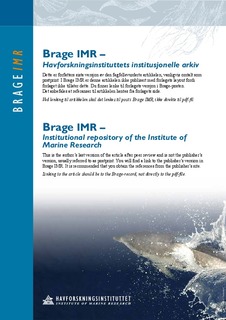| dc.description.abstract | Material collected in summer 2004 from the Mid-Atlantic Ridge between Iceland and the Azores with three pelagic trawls was used to
estimate relative catchabilities of common fish, cephalopod, decapod, and jellyfish species. Catchability is defined as the ratio of
numbers caught between two trawls, standardized for towed distance. Taxon-specific catchability coefficients were estimated for
two large pelagic trawls with graded meshes, using a smaller pelagic trawl with a uniform mesh size as the reference trawl. Two of
the trawls were equipped with multiple opening–closing codends that allowed sampling of different depth layers. Generalized
linear and mixed models suggest that most of the taxa have catchabilities much lower than expected from the area of opening
alone, indicating that only a few species are herded by the large mesh at the mouth of larger trawls. Catchability coefficients
across taxa show a very large spread, indicating that the sampled volume for the larger trawls with graded meshes was highly
taxon-specific. Part of this variability can be explained by body size and taxonomic group, the latter probably reflecting differences
in body form and behaviour. The catchability estimates presented here form the basis for combining data for quantitative analyses
of community structure. | no_NO |
